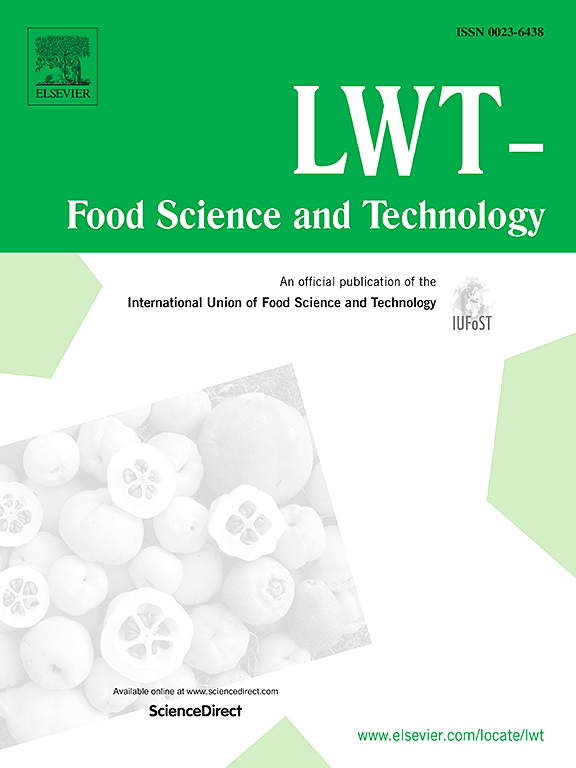基于动力学参数和风险模型的发酵香肠货架期亚硝酸盐暴露风险评估:基于蒙特卡罗模拟的模块化过程风险模型的开发
IF 6.6
1区 农林科学
Q1 FOOD SCIENCE & TECHNOLOGY
引用次数: 0
摘要
本研究对发酵和非发酵(对照)香肠在不同温度下储存过程中亚硝酸盐的降解进行了全面的动力学和热力学分析。该研究将动力学参数纳入儿童和成人亚硝酸盐摄入的估计每日摄入量(EDI)和危害商数(HQ)指数的计算中。该集成通过使用模块化过程风险模型(MPRM)和蒙特卡罗模拟来完成,并辅以贝叶斯分析来验证结果的可靠性。在第95百分位,对照样品的HQ指数为0.835,发酵样品的HQ指数为0.203 ~ 0.252,显著低于对照样品。在成虫的情况下,对照样品的HQ指数在第95百分位记录为0.179,而发酵样品的数值明显较低,在0.043至0.054之间。这些发现表明,与未发酵的香肠相比,食用发酵香肠样品大大降低了与亚硝酸盐相关的风险。本文章由计算机程序翻译,如有差异,请以英文原文为准。
Integration of kinetics parameters and risk models for nitrite exposure risk assessment in fermented sausages during shelf-life: Development of modular process risk model based on Monte-Carlo simulation
This study presents a comprehensive kinetic and thermodynamic analysis of nitrite degradation during the storage of fermented and non-fermented (control) sausages at various temperatures. The research integrated kinetic parameters into calculation of the estimated daily intake (EDI) and Hazard Quotient (HQ) index for nitrite consumption in children and adults. This integration was accomplished by using the Modular Process Risk Model (MPRM) and Monte Carlo simulation, supplemented by Bayesian analysis to validate the reliability of the results. For children at the 95th percentile, the control sample had an HQ index of 0.835, whereas fermented samples showed significantly lower indices ranging from 0.203 to 0.252. In the case of adults, the control sample's HQ index at the 95th percentile is recorded at 0.179, while the fermented samples demonstrate markedly lower values, ranging from 0.043 to 0.054. These findings indicate that consumption of fermented sausage samples substantially mitigates the risk associated with nitrite compared to non-fermented sausages.
求助全文
通过发布文献求助,成功后即可免费获取论文全文。
去求助
来源期刊

LWT - Food Science and Technology
工程技术-食品科技
CiteScore
11.80
自引率
6.70%
发文量
1724
审稿时长
65 days
期刊介绍:
LWT - Food Science and Technology is an international journal that publishes innovative papers in the fields of food chemistry, biochemistry, microbiology, technology and nutrition. The work described should be innovative either in the approach or in the methods used. The significance of the results either for the science community or for the food industry must also be specified. Contributions written in English are welcomed in the form of review articles, short reviews, research papers, and research notes. Papers featuring animal trials and cell cultures are outside the scope of the journal and will not be considered for publication.
 求助内容:
求助内容: 应助结果提醒方式:
应助结果提醒方式:


